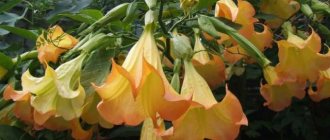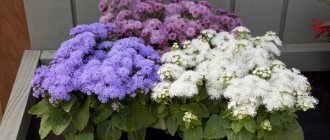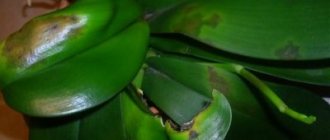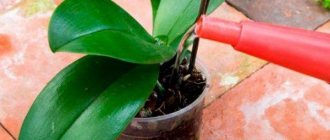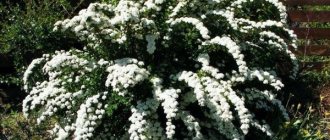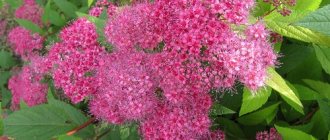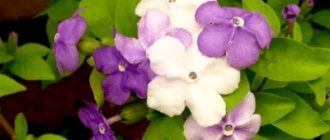Spiraea gray Grefsheim is a deciduous shrub belonging to the Rosaceae family. The genus of these plants is quite extensive; they lend themselves to interspecific crossing without any particular difficulties. During the breeding experiment, two varieties were used: Zverobolistnaya and Belovato-gray. Thus, in 1949, a new hybrid species appeared in Norway - Spiraeacinerea Grefsheim.
Due to its extraordinary properties, it is used to decorate personal plots, gardens, and parks. Landscape designers prefer the Grefsheim hybrid for its aesthetics and versatility, and gardeners prefer it for its minimal care.
Description of Spirea Grefsheim
Spiraea gray Grefsheim, the description of which is of interest to many gardeners, has a spherical shape and an almost identical height and width of 1.5-2 m. The culture of this variety can be easily trimmed, which allows you to adjust the size. The spreading crown is formed by flexible branches of a red-brown hue.
Spiraea has excellent decorative properties
The young plant has straight vertical shoots. It has narrow, lanceolate, pointed leaves. The bottom is covered with gray fluff. The leaves reach 2-3 cm in length and 1 cm in width.
The root system is distinguished by many branches and its ability to take root in different types of soil. According to the description of Grefsheim's spirea, its flowers have white petals and form corymbose inflorescences. They decorate flowers from mid-May to the end of June. In good weather, flowering lasts 1.5 months.
Important! Beekeepers often plant crops near their homes. The bush is a wonderful spring honey plant.
Flowering period
More than 90 varieties of spirea are known. They are distinguished by the shape of the crown (curved branches, erect), and by the timing of flowering. Spiraea Grefsheim is a spring variety, so flowering does not last long, about 20 days. Dazzling white buds begin to appear in mid-May. The bush very quickly becomes covered with a continuous cloud of fragrant flowers. This is probably why it has become most widespread among gardeners.
Note! Grefsheim blooms on one-year-old branches, so it needs pruning immediately after flowering.
Planting a plant
Spirea Arguta - description, planting and care
Spiraea Greif Shine is easy to care for. Planting a plant is not difficult. In this case, rooted cuttings are most often used for this purpose.
Planting from seeds
The culture does not propagate by seed. The germination parameters of planting material are 4-5%. If desired, this fact can be established experimentally.
Planting seedlings in open ground
It is recommended to plant the plant in open soil in the warm season. It is best to do this in the spring. The flower will take root well. When creating a hedge, the distance between bushes is at least 0.5 m. For group plantings, the distance should be 1 m.
The planting hole should be 2-3 times larger than the root ball. A drainage layer is poured onto the bottom of the recess. It may include stones, crushed bricks or expanded clay.
The crop is usually grown from seedlings
Transfer
You can replant spirea from place to place throughout the entire growing season. Just transplanting and transplanting with division have some differences.
3-4 year old bushes tolerate a change of location better. The root system of a young plant is still compact. It is easier to dig it up and plant it in a new place. The planting hole will also not be large in size.
Spiraea Grefsheim is recommended to be replanted in the fall for the purpose of dividing the bush. These are usually large mature bushes over 5-6 years old.
Step-by-step description of work on preparing Grefsheim spirea planting material:
- Pruning is carried out to thin the crown and remove damaged and growing shoots.
- A bush with an earthen lump is dug up.
- The roots are washed with clean water.
- The roots are cut with a sterile instrument.
- Damaged roots are removed.
Root division
The cuttings should have a good piece of root and several shoots.
Preparing the planting hole:
- A hole is dug (the size should be 2-3 times larger than the roots).
- A third of the height of the pit is filled with a nutrient mixture of turf soil, sand, and peat.
- A section is placed on the mixture layer.
- The soil is filled to ground level and compacted well.
- The bush is watered at the rate of 20 liters per bush.
- The root zone is mulched with peat (humus, sawdust, rotted leaves).
For simple transplantation, the rules are the same, with the exception of dividing the rhizome.
Important! Transplantation and division work should be carried out in cloudy weather.
How to care for spirea Grefsheim
Spiraea Wangutta - botanical description and varieties
To achieve success in growing spirea Grefsheim and avoid stunting, it is worth providing her with comprehensive care.
Watering
The description of Grefsheim spirea says that the plant does not need frequent watering. It is recommended to moisten the soil twice a month. It is recommended to pour 1.5 buckets of water under the bush. In dry weather, the soil should be moistened more often.
The soil in which the bush grows must have high water permeability. The soil around the crop must be systematically loosened and weeded.
The plant needs to be watered in a timely manner
Top dressing
Planting and caring for the ashen spirea Grefsheim includes the mandatory application of fertilizers. Chicken manure and cow infusion are used for this purpose. It is recommended to fertilize before flowering and after spring pruning is completed.
Trimming
It is recommended to pay special attention to crop pruning. The procedure should be performed in July after flowering has ended. Young shoots that have bloomed need to be shortened to strong buds. They form throughout the stem, which is why the procedure should not be carried out annually.
Important! If you cut off living buds, the spirea will not be able to bloom. During the first procedure in the spring, it is worth removing weak shoots up to the area where large buds are located.
Diseases and pests
Grefsheim spirea is not susceptible to diseases, but the bushes have to be protected from pests. The culture is especially loved by juice-sucking insects such as:
- spider mite. It settles on a leaf and slowly draws juices out of it, depriving it of nutrition. The leaf blade turns yellow and falls off. At the first signs, the bush must be treated with chemicals. Phosfamide (0.2%) and karbofos (0.3%) are suitable. If necessary, treatment should be repeated after 3-4 days;
- bean aphid. This pest destroys inflorescences and tender young shoots. You can fight aphids with agrovertin, actara, and intovir;
- oxalum lancet. Gray butterfly. It is not dangerous to the plant, and its caterpillars can gnaw the entire bush. The same drugs used against aphids will help destroy the pest. For prevention, it is recommended to treat the bushes in early summer (before the buds open) and in the fall with one of the following drugs: fufanon, spark, fitoverm.
Reproduction methods
Spiraea Willow - care and cultivation
Spiraea ashy Grefsheim propagates by cuttings. Woody shoots are suitable for this. They are trimmed, the top part and some leaves are removed. After this, the cutting must be placed in moist, loose soil. To ensure that the seedlings are strong, an interval of 20 cm is left between them. It is best to grow cuttings in a warm place with high humidity.
Also, propagation of the crop can be carried out by dividing the rhizomes. The procedure is carried out in the fall. To do this, the bush is dug up and divided. When planting in the ground, drainage is organized.
general information
Spiraea got its name from its shoots that are surprisingly flexible for a shrub, because from ancient Greek this word literally translates as “bend.” People call the popular ornamental shrub meadowsweet, so it’s likely that you know it by this name.
Spiraea combines truly vital features for our latitudes. It is at the same time very unpretentious, resistant to severe frosts and blooms for a long time even on the hottest days.
Photo: orchardo.ru
There are dwarf spireas that barely stretch up to 20 cm and are well suited for rockeries. But there are also full-fledged tall shrubs 1-1.5, or even up to 2.5 m. The meadowsweet bark has an interesting natural feature - it can peel off. This is its natural life cycle, which periodically frightens inexperienced gardeners.
All spireas have shallow and superficial, but very developed fibrous roots. The branches and leaves can be of completely different types, but the flowers are often similar. They are small, but there are a lot of them, and they are always collected in large lush inflorescences. Shades range from snow-white to rich dark pink.
Photo: stroim-sad.ru
Use in landscape design
The plant can decorate any flower garden. To get a harmonious composition, you should choose additions in the form of crocuses, tulips, and daffodils. Bushes are also placed along a mesh or fence. After a few years they form a beautiful hedge.
The flower is actively used in landscape design
Spiraea bushes differ in flowering times. Many designers advise placing different varieties of this crop nearby. This helps in creating interesting compositions. Flowering bushes are combined with plants with small decorative berries.
Spiraea Grefsheim has excellent decorative properties. In order for the culture to develop well and bloom profusely, it is necessary to strictly follow the rules of care. It should be comprehensive and include timely watering, fertilizing, and pruning. Protection of crops from diseases and parasites is of no small importance.
Care
Caring for vegetation is easy. The main thing is to carry out basic agrotechnical measures on time, which include:
- watering;
- feeding;
- pruning;
- organizing shelter for the winter.
More careful care of plants is necessary during the first 3 years after planting . While the bushes are not very developed, more attention needs to be paid to removing weeds, since they take all the nutrients from the soil and can completely suppress the crop. As parasitic plants appear, they should be immediately removed along with the roots.
Did you know? In Rus', spirea was a fairly common plant. Its branches were used as a whip.
Watering and fertilizing
Until the bush has grown a powerful rhizome, it needs more water. During hot periods, you will need to water at least 3 times a month . Each plant consumes 15 liters of water. They bring it under the root. In the future, you can limit watering to 1-2 times a month, depending on weather conditions.
Be sure to loosen the soil around the bushes to a depth of about 5 cm after each watering and precipitation . This is necessary for uniform distribution of moisture in the soil, as well as increasing the supply of oxygen to the rhizome. Immediately after loosening, you can mulch the tree trunk circle with straw or sawdust. This move will allow you to retain moisture in the soil longer and reduce the frequency of watering.
To grow a beautiful plant that will bloom profusely, you need to fertilize 3 times a season:
- Before the buds swell in the spring - nitrogen fertilizers . You can use urea. It is applied at a rate of 5–10 g per m² of tree trunk circle. Can be embedded in moist soil to a depth of 5 cm or dissolved in water for irrigation. Instead of urea, you can use mullein solution (diluted with water in a ratio of 1:10) or chicken droppings (300 g per 10 liters of water).
- In mid-July - organic fertilizers . You can take rotted compost (1 kg per m² of tree trunk circle) in combination with wood ash (100 g/m²). This mixture is used as mulch. With subsequent watering during the loosening process, this layer will move into deeper layers of soil, where it will begin to decompose and release nutrients.
- At the end of September - superphosphate (40 g/m²) . It can be added to the soil for digging or diluted in water for irrigation.
Did you know? The shoots of spirea contain a substance - the glycoside salicin. In pharmacology, it is used to produce drugs such as Aspirin.
Trimming
This agrotechnical measure is carried out to stimulate shoot growth and increase the abundance of flowering . In addition, pruning eliminates the risk of plant infection by various fungal diseases and pests. All types of spirea without exception need this manipulation.
Stimulating pruning is carried out on fairly mature bushes (3-4 years). Young plants only need sanitary manipulations of this kind. They involve the removal of withered, broken, frostbitten or disease- and pest-damaged branches. Sanitary pruning is carried out regardless of the season, as necessary. The stimulating procedure is carried out in the fall, 2 weeks before the cold snap. During this period, pruning is performed only for varieties that bloom for a short time (1-2 months). For varieties such as Vanguta and Billarda, the best period is early spring, before the buds swell. With stimulating pruning, 5 strong buds are left on each shoot.
All sections are carefully dusted with wood ash and then covered with garden varnish . At the 7th year of plant life, the root shoots are removed, trying not to leave stumps that can produce lateral shoots. Otherwise, the bush will lose its decorative appearance. You should also remove weak branches that produce a small number of flowers and do not bloom at all.
In the case when the spirea practically stops blooming altogether, all branches should be cut off completely in the fall, to a height of about 10 cm . In spring, the bush will produce a large amount of new growth, on which many flowers will subsequently form.
Video: Pruning spirea
Snowberry
Snowberry is an ornamental shrub of the deciduous type. The plant is especially valued for its fruits, which are colored snow-white or pleasant pink. It is noteworthy that even with the arrival of winter frosts, the beautiful fruits do not lose color. They remain hanging on the bush until spring, which is especially pleasing to the eye of the beholder.
Snowberry loves sunlight. If you choose the right location for the shrub, it will begin to develop quickly and actively, quickly turning from a seedling into a full-fledged plant. Snowberry bushes look great in the landscape of large cities, because under the influence of smog and industrial gases they do not lose their attractiveness.
